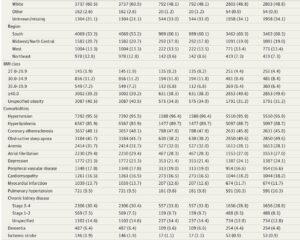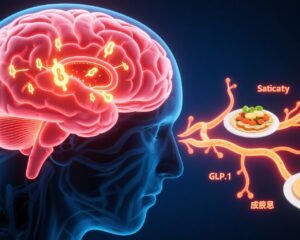Introduction: Navigating the Digital Age and Cognitive Health
In today’s hyperconnected world, digital technologies such as smartphones, computers, and the Internet have become intricately woven into daily life. For the first generation to grow up with these technologies, their advancing age now raises an urgent question: as they approach the age when neurodegenerative conditions like dementia commonly emerge, do lifelong digital habits accelerate cognitive decline or serve as cognitive guardians?
This article explores compelling new evidence from a landmark 2025 meta-analysis published in Nature Human Behaviour by researchers from the University of Texas at Austin and Baylor University, which reshapes our understanding of how digital technology affects brain aging.
Background: The Burden of Cognitive Decline and the Digital Dilemma
Dementia affects millions worldwide and represents a significant public health challenge as populations age. Traditional theories have posited a phenomenon dubbed “digital dementia,” warning that reliance on digital aids could impair memory and executive function—analogous to muscle atrophy from disuse—by outsourcing cognition to devices rather than exercising internal brain reserves.
Conversely, emerging notions of “cognitive reserve” suggest that mentally stimulating activities, including the complex tasks involved in digital technology use, might build resilience against cognitive decline. The concept of “technological cognitive reserve” hypothesizes that technology could actively promote brain health by enhancing cognition, social engagement, and compensatory strategies.
Scientific Evidence: What the Data Tell Us
The 2025 meta-analysis synthesized data from 136 studies conducted globally between 1990 and 2024, involving over 411,000 individuals aged 50 and above, tracked for an average of 6.2 years. This extensive sample size and follow-up duration provide a robust dataset to evaluate the long-term effects of digital engagement on cognition.
Key findings include:
– A 58% reduction in the risk of developing cognitive impairment or dementia among technology users compared to non-users.
– A 26% slower rate of cognitive decline over time in those who regularly used digital devices.
– Benefits from all types of digital technology—computers, smartphones, and the Internet—were observed separately, with mixed use providing the greatest protective effect.
– Crucially, these associations held even after controlling for confounders such as education level, income, and general health status.
These findings deliver a decisive counterpoint to the “digital dementia” hypothesis, instead supporting the “technological cognitive reserve” model.
The Mechanisms Behind Digital Technology’s Protective Effects
Researchers propose three major pathways through which digital technology may support brain health:
1. Cognitive Gym: Engaging with technology requires multitasking, problem-solving, and information processing that exceed the cognitive demands of traditional brain games, potentially strengthening executive functions.
2. Digital Social Networks: Features like video calls reduce feelings of loneliness and social isolation—known risk factors for cognitive decline—thus indirectly preserving cognitive function.
3. Smart Scaffolds: Reminder apps and digital aids help compensate for early memory impairments, supporting independence and daily functioning in those at risk or in early stages of dementia.
Interestingly, moderate use of digital technology—approximately one to two hours daily—emerged as optimal. Excessive use might counteract benefits, highlighting the importance of balanced engagement.
Misconceptions: The Myth of Digital Dementia
Despite growing evidence, the stereotype of technology as a cognitive threat remains widespread. Common misconceptions include:
| Misconception | Reality |
|————————|————————————————————-|
| Overreliance causes brain laziness | Digital engagement, when balanced, stimulates cognition rather than diminishes it. |
| Technology usage equals less memory use | Digital reminders and multitasking challenge memory and executive function instead of replacing them. |
| All screen time is harmful to cognition | Interactive and socially engaging digital uses are beneficial, unlike passive screen consumption. |
Dispelling these myths is vital for maximizing digital technology’s potential as a brain health tool.
Practical Recommendations: How to Harness Technology for Brain Health
Based on current research, practical advice includes:
– Prefer interactive devices like smartphones and tablets over passive ones like television.
– Engage in varied digital activities that combine cognitive challenges and social interaction.
– Limit daily screen time to moderate levels (1-2 hours) to avoid cognitive overload.
– For older adults (70+), prioritize mastering communication tools such as video calls and health monitoring apps.
– Combine digital engagement with offline social and cognitively stimulating activities such as group gatherings or puzzles.
Expert Insights and Future Directions
Dr. Emily Sanders, a neurologist specializing in cognitive aging, notes, “This meta-analysis provides powerful evidence that digital technology can be a formidable ally in cognitive health preservation, rather than a liability. However, development of age-friendly, cognitively supportive technologies must continue alongside digital literacy training to fully realize these benefits.”
The advancement of brain-computer interfaces and AI-assisted cognitive tools heralds a new frontier, where “cognitive-friendly” digital environments and lifelong education in technology use could enable early detection and intervention for cognitive decline.
Patient Scenario: Mike’s Journey to Embrace Digital Tools and Protect His Mind
Mike, a 68-year-old retired teacher, was initially skeptical about smartphones, fearing they’d distract rather than help. After his daughter introduced him to simple apps for video calls and medication reminders, he noticed less loneliness and fewer missed appointments.
Motivated, Mike expanded his digital use to include online brain training games and social groups. Over two years, his cognitive tests showed stable performance, and he reported higher confidence in managing daily tasks.
His story reflects real-world validation of how mindful digital engagement supports cognitive resilience.
Conclusion: Embracing Technology for a Resilient Brain in an Aging World
The emerging consensus from extensive global research is clear: far from causing “digital dementia,” appropriate use of digital technologies substantially lowers the risk and slows the progression of cognitive decline in older adults.
As the aging population grows alongside digital innovation, harnessing technology as a tool for cognitive health presents a promising strategy to offset the burden of dementia. This paradigm shift redefines aging not as a predetermined biological decline but as an opportunity for cognitive empowerment through informed tech use.
Continued research, education, and development of cognitively supportive digital tools will be essential to maximize these benefits for individuals and society.
References
A meta-analysis of technology use and cognitive aging, Nature Human Behaviour, 2025
Additional references:
– Stern Y. Cognitive reserve in ageing and Alzheimer’s disease. Lancet Neurol. 2012;11(11):1006-1012.
– Livingston G, et al. Dementia prevention, intervention, and care: 2020 report of the Lancet Commission. Lancet. 2020;396(10248):413-446.
Note
This article emphasizes evidence-based interpretations and practical guidelines on digital technology’s role in cognitive aging, addressing both the general public and health professionals.



